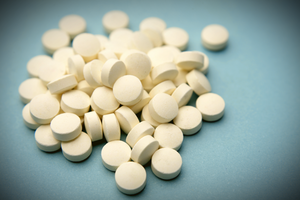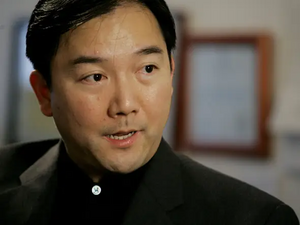Drug trade in Daxia

The drug trade in Daxia is an activity that goes back centuries to the Zhong dynasty. Belying its status as a harsh and unforgiving police state, numerous drugs and addictive substances are actually legal to manufacture, sell and consume in the Repubic of Daxia. The nation is the world's top producer of opiates, crystal methamphetamine and captagon. Giant pharmaceutical conglomerates such as the Opdo Corporation and ToxiCor produce and market hundreds of tons of addictive substances every year, officially solely for internal consumption, but in all likelihood also for export by international trafficking networks.
Undoubtedly in addition to the enormous profits derived from the drug trade both legal and illegal, there are other considerations to take into account. The governmental pursuit of the creation of new, fresh horrors to control or break the minds and will of its people may be behind the legal status of addictive substances. Already the government has instrumentalized the use of opiates through its Xisheng Office of Contentment to enact the wholesale sedation of unruly populations in League-occupied Varshan, to great success.
Overview
The status of drug use in Daxia has had many shifts in the last century or so. Use of recreative opioids was very common and legal during the late Qian period, with the Hongli emperor reportedly consuming them to counteract his frequent mental breakdowns during the war. The military governments that followed the monarchy tried hard to squash the use of drugs. They clamped down harshly on users, producers and traffickers when they could get their hands on them. Campaigns to burn opium poppy fields took place yearly, traffickers were hanged in public places in an effort to create fear, drug users were jailed or sent to mental asylums. These draconian methods failed to make a dent, the astronomical profits meant that new criminal outfits such as the National Opium Syndicate were undaunted. By the 1970's the war on drugs was quietly and reluctantly shelved, and from then on the problem was basically ignored.
The arrival of the PCD brought a change in the approach to the drug problem. The new government saw drug use as an insidious tool to increase its grip on the population. The new and now ideologically motivated intelligence apparatus infiltrated groups like the National Opium Syndicate, but instead of being destroyed they were coopted and put in service of government aims. The crime bosses now had government minders and quotas to fill.
Manufacture
Opium
Crystal methamphetamine
Captagon
Captagon is the commercial name for the drug compound fenethylline hydrochloride. This drug is known to have a stimulating effect on the nervous system, boosting alertness, concentration and energy levels of a person allowing them to work for longer periods of time without resting. Commercialization of captagon is the exclusive right of the pharmaceutical giant Opdo, sole holders of the drug patent. Opdo supplies the Daxian government with captagon which is then given to prison inmates doing hard labor and to soldiers in active battlefronts to boost their combat alertness. Some side effects include sleep deprivation, depression, anxiety, heart problems and hallucinations. Opdo's main captagon laboratories are located in the eastern city of Khov, relatively close to Rusana which is a big market for the drug. Opdo manufactured captagon pills have been making their way to Crona for several years now via a variety of means, the company denies any responsibility and points that the use of its product is the sole responsibility of the buyer.
Trafficking
Criminal groups
National Opium Syndicate

One of Daxia's oldest criminal organizations, the Syndicate is rumored to be the direct successor of the group that provided opium to the imperial court. It survived the military crackdowns albeit with its structure much changed by the ordeal of government sponsored bloodletting. From a pyramidal, highly hierarchichal structure, nowadays the group operates horizontally, being made up of many semi-autonomous territorial cells that each have an assigned province to operate in. The syndicate is rumored to be engaged solely in transportation and street level sales of opioids within the Alshari mainland and the southern Cathay, with production shifted to other entities. Security experts believe a man named Zhenli Ye Gon to be the top leader of the organization, its 'Director'. If he has any actual operational control or is only a puppet that follows directives from the government cannot be ascertained. Zhenli Ye Gon has led the organization since the mid 1990's after carrying out a palace coup against the previous leadership.